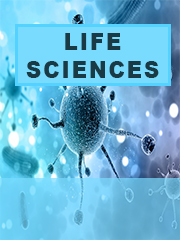TOP CATEGORY: Chemicals & Materials | Life Sciences | Banking & Finance | ICT Media

Download Report PDF Instantly
Report overview
Neonatal phototherapy devices are specialized medical equipment designed to treat neonatal jaundice, a common condition affecting newborns characterized by elevated bilirubin levels. If left untreated, neonatal jaundice can progress to severe hyperbilirubinemia, potentially leading to neurological damage or death. These devices utilize light therapy to break down excess bilirubin in the blood, facilitating its excretion and preventing complications. The equipment is categorized by type and application, making it adaptable for various clinical and home settings.
The global Neonatal Phototherapy Equipment market was valued at approximately USD 217 million in 2024 and is projected to grow to USD 328.08 million by 2032, reflecting a Compound Annual Growth Rate (CAGR) of 4.70% during the forecast period. Historical trends reveal steady growth driven by rising awareness about neonatal health and advancements in medical technologies.
Regionally, the North American market size was estimated at USD 61.19 million in 2024, with a CAGR of 4.03% expected from 2025 to 2032. Europe, Asia-Pacific, and emerging markets in South America and Africa also contribute significantly to the overall market. The increasing prevalence of neonatal jaundice, coupled with technological advancements, continues to drive the expansion of this sector.
Increasing Prevalence of Neonatal Jaundice: The condition affects a significant percentage of newborns worldwide, creating a consistent demand for phototherapy equipment.
Technological Advancements: Innovations such as LED-based devices, portable units, and whole-body phototherapy systems enhance efficiency and usability.
Rising Awareness: Initiatives by healthcare organizations to promote neonatal health and educate about jaundice treatment drive market growth.
Improved Healthcare Infrastructure: Developing regions are increasingly investing in neonatal care, creating opportunities for market expansion.
High Initial Costs: The cost of acquiring and maintaining advanced phototherapy devices may deter adoption, particularly in low-income regions.
Limited Accessibility: In rural areas, the lack of trained personnel and infrastructure hampers the usage of neonatal phototherapy equipment.
Potential Side Effects: Prolonged or improper use of phototherapy can cause complications such as dehydration or skin irritation, impacting consumer confidence.
Expansion in Emerging Markets: Growing investments in healthcare in regions like Asia-Pacific and Africa present untapped opportunities.
Home-Use Devices: The rising trend of home-based care has increased demand for compact and user-friendly phototherapy devices.
Integration with IoT: Incorporating smart technologies for real-time monitoring and data analytics could enhance the functionality of phototherapy equipment.
Regulatory Hurdles: Compliance with stringent medical device regulations can slow product approvals and market entry.
Competition: The presence of numerous players increases price competition, potentially impacting profit margins.
North America leads the Neonatal Phototherapy Equipment market, driven by high healthcare expenditure, advanced infrastructure, and a strong focus on neonatal care. The U.S. accounts for the majority share, supported by robust R&D activities and the presence of key market players.
Europe follows closely, with countries like Germany, the UK, and France at the forefront. Rising awareness, coupled with government initiatives to improve neonatal health, propels market growth in the region.
The Asia-Pacific region is witnessing the fastest growth, attributed to increasing birth rates, improving healthcare facilities, and rising awareness about neonatal health. Key contributors include China, India, and Japan.
Emerging economies in South America and the Middle East & Africa are gradually adopting neonatal phototherapy devices. Growth in these regions is fueled by international aid, government programs, and improving healthcare systems.
The competitive landscape of the Neonatal Phototherapy Equipment market is characterized by the presence of both established and emerging players. Major companies include:
BISTOS: Known for innovative and cost-effective solutions.
Narang Medical Limited: Offers a wide range of neonatal care products.
Wipro GE Healthcare: A leader in advanced medical technologies.
Zeal Medical Private Limited: Specializes in neonatal and pediatric devices.
These companies focus on strategies such as mergers, acquisitions, product innovation, and regional expansion to maintain their market positions.
Hospital: Hospitals dominate the application segment, benefiting from high patient turnover and advanced healthcare infrastructure.
Family: The demand for home-use devices is growing, driven by the preference for convenient and cost-effective treatment options.
Overhead: These devices are commonly used in hospitals for effective treatment of severe cases of neonatal jaundice.
Whole Body: Designed for comprehensive treatment, these devices are gaining popularity in both hospital and home settings.
BISTOS
Narang Medical Limited
YSENMED
Wipro GE Healthcare
Zeal Medical Private Limited
Technocare Medisystems
Pal Surgical And Medical
Ibis Medical Equipment & Systems Pvt. Ltd
HOSCO Private Limited
Matrix Medical System
JaincoLab
AVI Healthcare Pvt Ltd
TSE
Advin Health Care
Perlong Medical Equipment Co., Ltd
North America (USA, Canada, Mexico)
Europe (Germany, UK, France, Russia, Italy, Rest of Europe)
Asia-Pacific (China, Japan, South Korea, India, Southeast Asia, Rest of Asia-Pacific)
South America (Brazil, Argentina, Columbia, Rest of South America)
The Middle East and Africa (Saudi Arabia, UAE, Egypt, Nigeria, South Africa, Rest of MEA)
Key Benefits of This Market Research:
Key Reasons to Buy this Report: